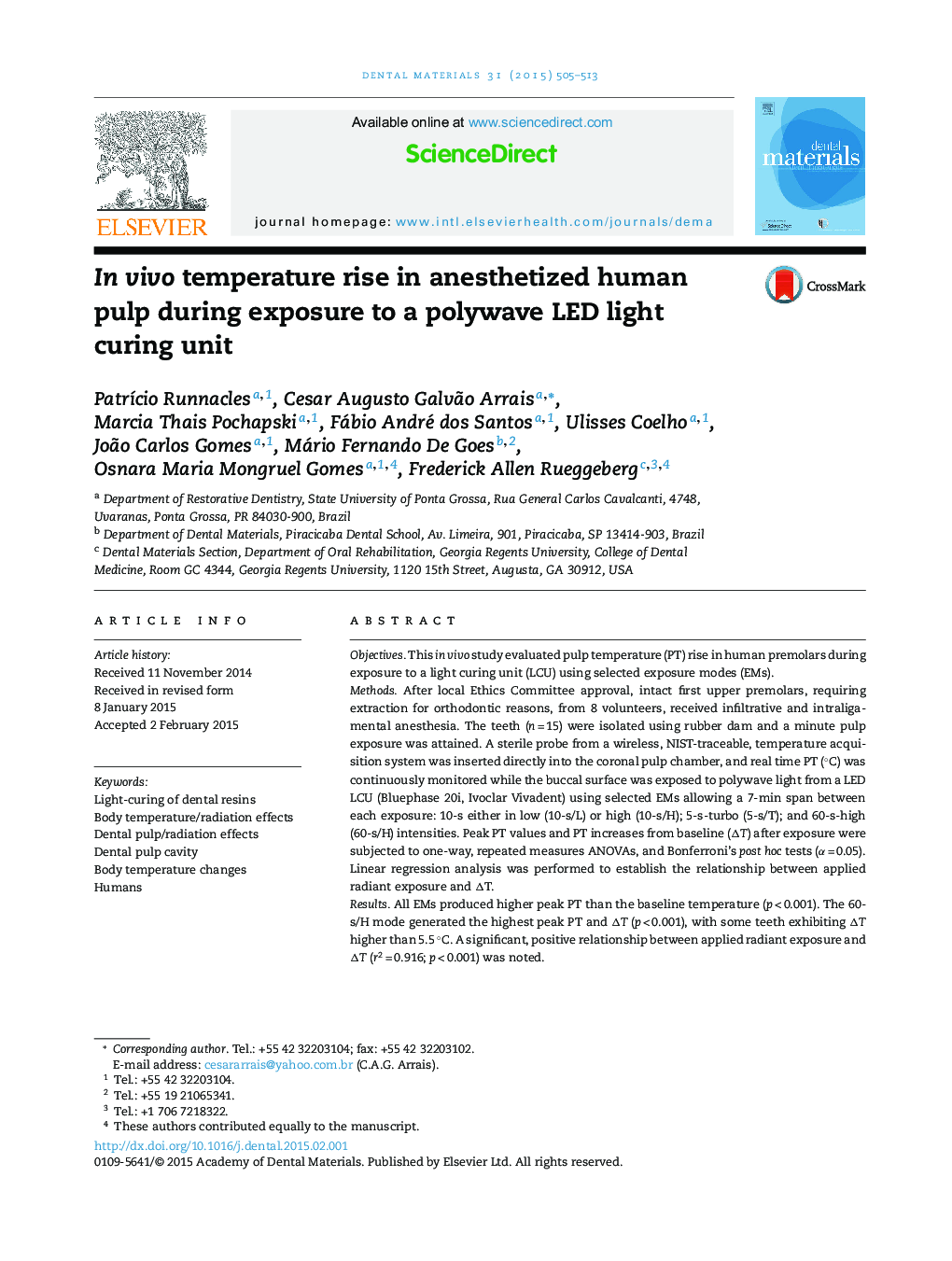| Article ID | Journal | Published Year | Pages | File Type |
|---|---|---|---|---|
| 1420676 | Dental Materials | 2015 | 9 Pages |
•Accurate real-time, in vivo pulp temperature rise was measured in intact human first premolars.•Exposure to LED light at different exposure modes resulted in pulp temperature rise.•Positive relationship between radiant exposure and pulp temperature was noted.
ObjectivesThis in vivo study evaluated pulp temperature (PT) rise in human premolars during exposure to a light curing unit (LCU) using selected exposure modes (EMs).MethodsAfter local Ethics Committee approval, intact first upper premolars, requiring extraction for orthodontic reasons, from 8 volunteers, received infiltrative and intraligamental anesthesia. The teeth (n = 15) were isolated using rubber dam and a minute pulp exposure was attained. A sterile probe from a wireless, NIST-traceable, temperature acquisition system was inserted directly into the coronal pulp chamber, and real time PT (°C) was continuously monitored while the buccal surface was exposed to polywave light from a LED LCU (Bluephase 20i, Ivoclar Vivadent) using selected EMs allowing a 7-min span between each exposure: 10-s either in low (10-s/L) or high (10-s/H); 5-s-turbo (5-s/T); and 60-s-high (60-s/H) intensities. Peak PT values and PT increases from baseline (ΔT) after exposure were subjected to one-way, repeated measures ANOVAs, and Bonferroni's post hoc tests (α = 0.05). Linear regression analysis was performed to establish the relationship between applied radiant exposure and ΔT.ResultsAll EMs produced higher peak PT than the baseline temperature (p < 0.001). The 60-s/H mode generated the highest peak PT and ΔT (p < 0.001), with some teeth exhibiting ΔT higher than 5.5 °C. A significant, positive relationship between applied radiant exposure and ΔT (r2 = 0.916; p < 0.001) was noted.SignificanceExposing intact, in vivo anesthetized human upper premolars to a polywave LED LCU increases PT, and depending on EM and the tooth, PT increase can be higher than the critical ΔT, thought to be associated with pulpal necrosis.
